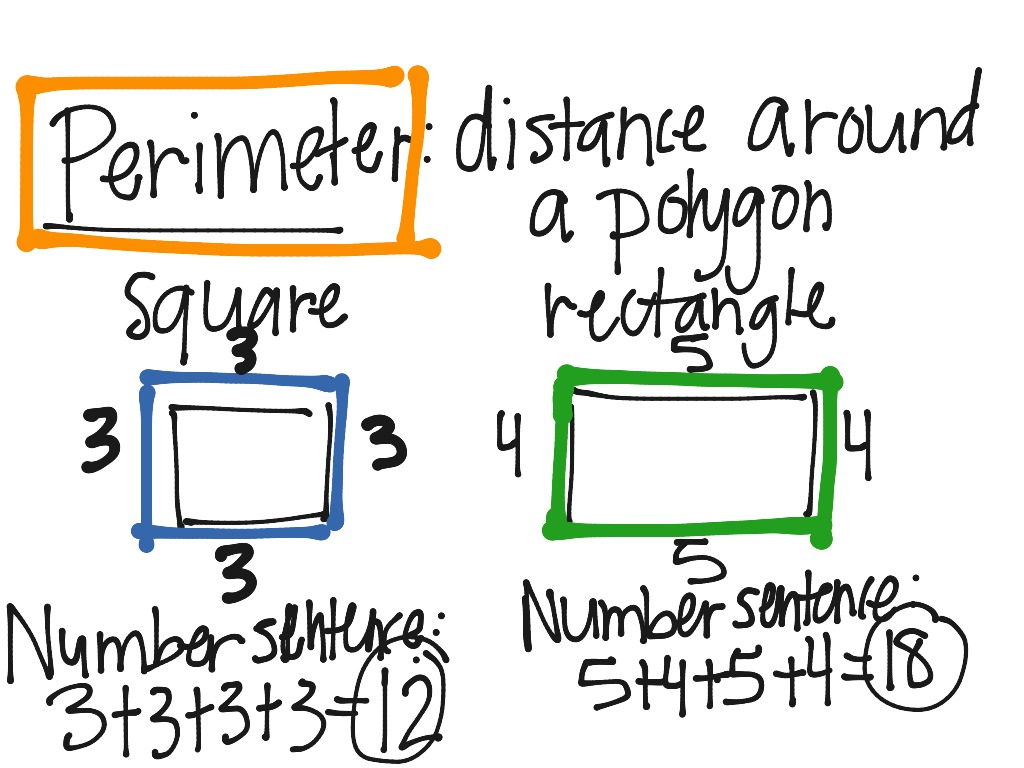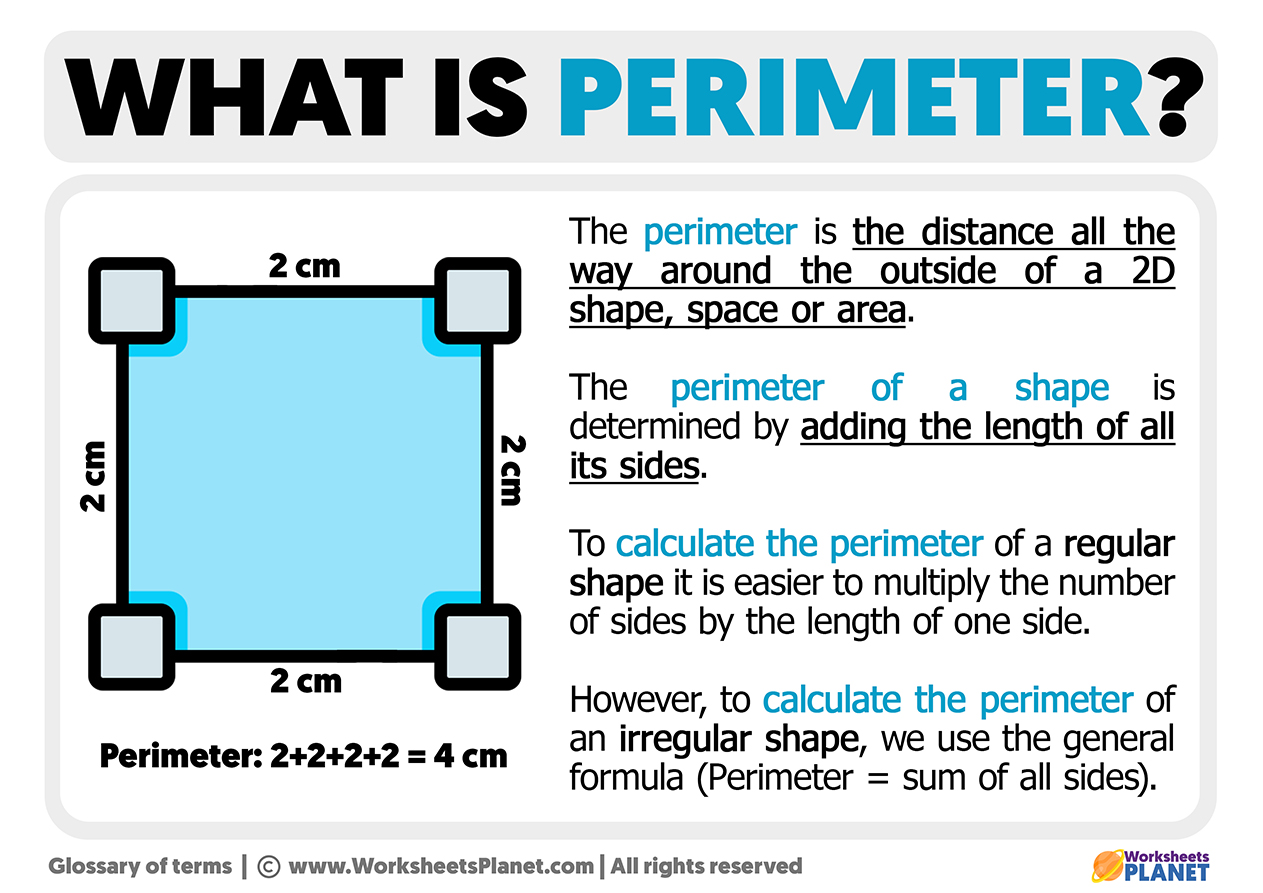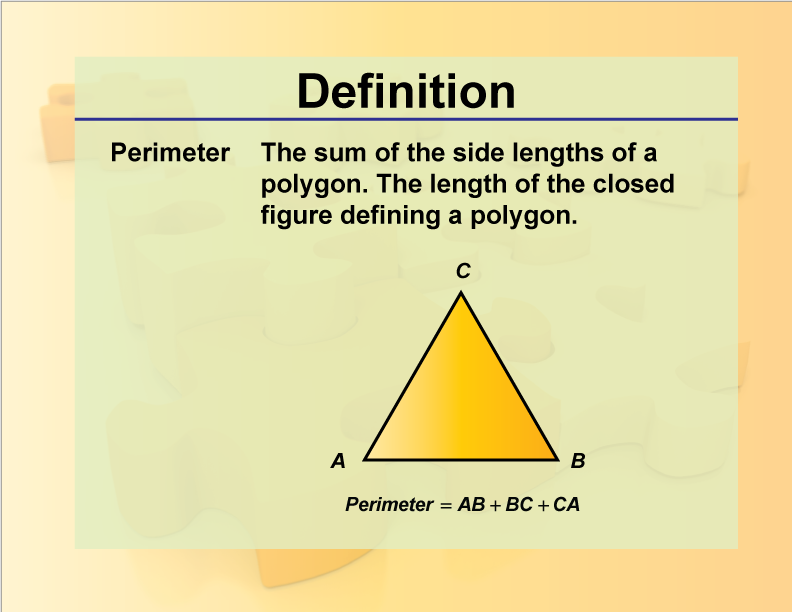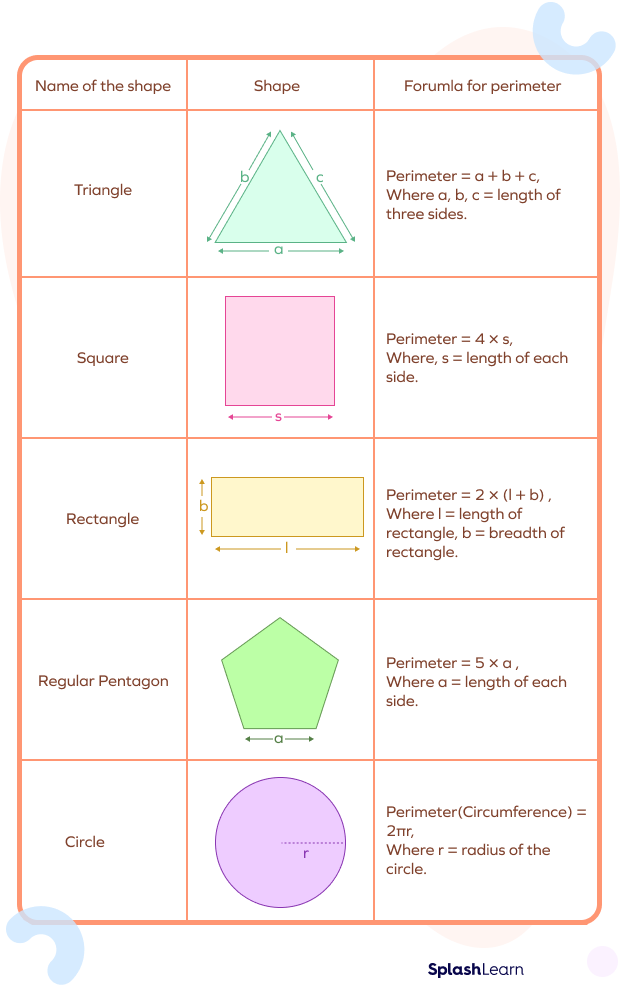Topic class 7 perimeter and area: Welcome to our comprehensive guide on Class 7 Perimeter and Area. In this article, you'll learn essential concepts, formulas, and practical applications to excel in your studies. Understand how to calculate the perimeter and area of various shapes, and gain confidence in solving related problems. Let's dive into the fascinating world of geometry!
Table of Content
- Perimeter and Area for Class 7
- Introduction to Perimeter and Area
- Understanding Perimeter
- Formulas for Calculating Perimeter
- Understanding Area
- Formulas for Calculating Area
- Perimeter and Area of Common Shapes
- Rectangle: Perimeter and Area
- Square: Perimeter and Area
- Triangle: Perimeter and Area
- Circle: Circumference and Area
- Examples and Practice Problems
- Real-life Applications of Perimeter and Area
- Frequently Asked Questions
- Conclusion
- YOUTUBE: Hãy xem video này để học cách tìm chu vi và diện tích của một hình hợp thể, sử dụng ví dụ về hình L. Thầy J sẽ hướng dẫn bạn từng bước một!
Perimeter and Area for Class 7
Understanding perimeter and area is crucial for solving many real-world problems. Below is a comprehensive guide to the concepts of perimeter and area tailored for Class 7 students.
Perimeter
The perimeter of a shape is the total length of its boundary. It is calculated by adding the lengths of all sides of the shape.
- Rectangle: The perimeter \( P \) of a rectangle is given by \( P = 2(l + b) \), where \( l \) is the length and \( b \) is the breadth.
- Square: The perimeter \( P \) of a square is given by \( P = 4a \), where \( a \) is the side length of the square.
- Triangle: The perimeter \( P \) of a triangle is the sum of its three sides, \( P = a + b + c \).
- Circle: The perimeter (circumference) \( C \) of a circle is given by \( C = 2\pi r \), where \( r \) is the radius.
Area
The area of a shape is the amount of space inside the boundary of the shape. It is measured in square units.
- Rectangle: The area \( A \) of a rectangle is given by \( A = l \times b \), where \( l \) is the length and \( b \) is the breadth.
- Square: The area \( A \) of a square is given by \( A = a^2 \), where \( a \) is the side length of the square.
- Triangle: The area \( A \) of a triangle is given by \( A = \frac{1}{2} \times b \times h \), where \( b \) is the base and \( h \) is the height.
- Circle: The area \( A \) of a circle is given by \( A = \pi r^2 \), where \( r \) is the radius.
Examples
Here are some examples to illustrate the calculation of perimeter and area:
- Example 1: Calculate the perimeter and area of a rectangle with length 5 cm and breadth 3 cm.
- Perimeter: \( P = 2(l + b) = 2(5 + 3) = 16 \text{ cm} \)
- Area: \( A = l \times b = 5 \times 3 = 15 \text{ cm}^2 \)
- Example 2: Calculate the perimeter and area of a square with side length 4 cm.
- Perimeter: \( P = 4a = 4 \times 4 = 16 \text{ cm} \)
- Area: \( A = a^2 = 4^2 = 16 \text{ cm}^2 \)
- Example 3: Calculate the area of a triangle with base 6 cm and height 4 cm.
- Area: \( A = \frac{1}{2} \times b \times h = \frac{1}{2} \times 6 \times 4 = 12 \text{ cm}^2 \)
- Example 4: Calculate the circumference and area of a circle with radius 7 cm.
- Circumference: \( C = 2\pi r = 2 \times 3.14 \times 7 = 43.96 \text{ cm} \)
- Area: \( A = \pi r^2 = 3.14 \times 7^2 = 153.86 \text{ cm}^2 \)

READ MORE:
Introduction to Perimeter and Area
Perimeter and area are fundamental concepts in geometry that help us understand the properties of different shapes and how to measure them. These concepts are essential for solving various mathematical problems and have practical applications in real life.
The perimeter of a shape is the total length of its boundary. It is a linear measurement and is calculated by adding the lengths of all the sides of the shape. For example, the perimeter of a rectangle is calculated as:
- Rectangle: \( P = 2(l + b) \), where \( l \) is the length and \( b \) is the breadth.
- Square: \( P = 4a \), where \( a \) is the side length.
- Triangle: \( P = a + b + c \), where \( a \), \( b \), and \( c \) are the sides of the triangle.
- Circle (Circumference): \( C = 2\pi r \), where \( r \) is the radius.
The area of a shape is the amount of space inside its boundary. It is a measure of the surface covered by the shape and is expressed in square units. The formulas for calculating the area vary depending on the shape:
- Rectangle: \( A = l \times b \)
- Square: \( A = a^2 \)
- Triangle: \( A = \frac{1}{2} \times b \times h \), where \( b \) is the base and \( h \) is the height.
- Circle: \( A = \pi r^2 \)
Understanding these formulas and how to apply them is crucial for solving problems related to perimeter and area. In the following sections, we will delve deeper into these concepts, providing detailed explanations and examples to help you master the topic.
Understanding Perimeter
The perimeter of a shape is the total distance around the shape. It is a one-dimensional measurement that represents the length of the boundary of a shape. Calculating the perimeter is essential in various real-life situations such as fencing a garden, framing a picture, or building a walkway.
Let's understand how to calculate the perimeter of different geometric shapes:
Rectangle
The perimeter of a rectangle is calculated by adding the lengths of all four sides. Since opposite sides of a rectangle are equal, the formula is:
\( P = 2(l + b) \)
- \( l \) is the length of the rectangle.
- \( b \) is the breadth (width) of the rectangle.
Example: If the length of a rectangle is 8 cm and the breadth is 5 cm, the perimeter is:
\( P = 2(8 + 5) = 2 \times 13 = 26 \) cm
Square
The perimeter of a square is calculated by adding the lengths of all four equal sides. The formula is:
\( P = 4a \)
- \( a \) is the side length of the square.
Example: If the side length of a square is 6 cm, the perimeter is:
\( P = 4 \times 6 = 24 \) cm
Triangle
The perimeter of a triangle is the sum of the lengths of its three sides. The formula is:
\( P = a + b + c \)
- \( a \), \( b \), and \( c \) are the lengths of the sides of the triangle.
Example: If a triangle has sides of lengths 3 cm, 4 cm, and 5 cm, the perimeter is:
\( P = 3 + 4 + 5 = 12 \) cm
Circle (Circumference)
The perimeter of a circle is known as the circumference. It is calculated using the radius of the circle. The formula is:
\( C = 2\pi r \)
- \( r \) is the radius of the circle.
Example: If the radius of a circle is 7 cm, the circumference is:
\( C = 2 \times 3.14 \times 7 = 43.96 \) cm
Understanding the concept of perimeter and knowing how to calculate it for various shapes helps in solving many practical problems. Practice with different shapes and measurements to strengthen your understanding.
Formulas for Calculating Perimeter
Calculating the perimeter involves summing up the lengths of all sides of a shape. Below are the formulas for calculating the perimeter of various common geometric shapes:
Rectangle
The perimeter \( P \) of a rectangle is calculated using the formula:
\( P = 2(l + b) \)
- \( l \) is the length of the rectangle.
- \( b \) is the breadth (width) of the rectangle.
Example: If the length of a rectangle is 10 cm and the breadth is 4 cm, the perimeter is:
\( P = 2(10 + 4) = 2 \times 14 = 28 \) cm
Square
The perimeter \( P \) of a square is calculated using the formula:
\( P = 4a \)
- \( a \) is the side length of the square.
Example: If the side length of a square is 5 cm, the perimeter is:
\( P = 4 \times 5 = 20 \) cm
Triangle
The perimeter \( P \) of a triangle is calculated using the formula:
\( P = a + b + c \)
- \( a \), \( b \), and \( c \) are the lengths of the sides of the triangle.
Example: If a triangle has sides of lengths 7 cm, 8 cm, and 9 cm, the perimeter is:
\( P = 7 + 8 + 9 = 24 \) cm
Circle (Circumference)
The perimeter (circumference) \( C \) of a circle is calculated using the formula:
\( C = 2\pi r \)
- \( r \) is the radius of the circle.
Example: If the radius of a circle is 6 cm, the circumference is:
\( C = 2 \times 3.14 \times 6 = 37.68 \) cm
Parallelogram
The perimeter \( P \) of a parallelogram is calculated using the formula:
\( P = 2(a + b) \)
- \( a \) is the length of one pair of opposite sides.
- \( b \) is the length of the other pair of opposite sides.
Example: If the sides of a parallelogram are 8 cm and 5 cm, the perimeter is:
\( P = 2(8 + 5) = 2 \times 13 = 26 \) cm
Regular Polygon
The perimeter \( P \) of a regular polygon (where all sides are equal) is calculated using the formula:
\( P = n \times s \)
- \( n \) is the number of sides.
- \( s \) is the length of each side.
Example: If a regular hexagon has sides of length 3 cm, the perimeter is:
\( P = 6 \times 3 = 18 \) cm
These formulas provide a straightforward way to calculate the perimeter of various shapes. Understanding and memorizing these formulas will help you efficiently solve perimeter-related problems.
Understanding Area
The area of a shape is a measure of the amount of space inside its boundary. It is a two-dimensional measurement expressed in square units. Calculating the area helps in various practical scenarios, such as determining the amount of paint needed to cover a wall or the size of a carpet required for a room.
Let's explore how to calculate the area of different geometric shapes:
Rectangle
The area \( A \) of a rectangle is calculated by multiplying its length and breadth:
\( A = l \times b \)
- \( l \) is the length of the rectangle.
- \( b \) is the breadth (width) of the rectangle.
Example: If the length of a rectangle is 10 cm and the breadth is 5 cm, the area is:
\( A = 10 \times 5 = 50 \) cm²
Square
The area \( A \) of a square is calculated by squaring the length of one of its sides:
\( A = a^2 \)
- \( a \) is the side length of the square.
Example: If the side length of a square is 4 cm, the area is:
\( A = 4^2 = 16 \) cm²
Triangle
The area \( A \) of a triangle is calculated using its base and height:
\( A = \frac{1}{2} \times b \times h \)
- \( b \) is the base of the triangle.
- \( h \) is the height of the triangle.
Example: If the base of a triangle is 8 cm and the height is 5 cm, the area is:
\( A = \frac{1}{2} \times 8 \times 5 = 20 \) cm²
Circle
The area \( A \) of a circle is calculated using its radius:
\( A = \pi r^2 \)
- \( r \) is the radius of the circle.
Example: If the radius of a circle is 7 cm, the area is:
\( A = \pi \times 7^2 = \pi \times 49 \approx 153.94 \) cm²
Parallelogram
The area \( A \) of a parallelogram is calculated by multiplying its base and height:
\( A = b \times h \)
- \( b \) is the base of the parallelogram.
- \( h \) is the height of the parallelogram.
Example: If the base of a parallelogram is 12 cm and the height is 6 cm, the area is:
\( A = 12 \times 6 = 72 \) cm²
Trapezoid
The area \( A \) of a trapezoid is calculated using its two parallel sides (bases) and its height:
\( A = \frac{1}{2} \times (a + b) \times h \)
- \( a \) and \( b \) are the lengths of the two parallel sides.
- \( h \) is the height of the trapezoid.
Example: If the lengths of the parallel sides of a trapezoid are 8 cm and 5 cm, and the height is 4 cm, the area is:
\( A = \frac{1}{2} \times (8 + 5) \times 4 = \frac{1}{2} \times 13 \times 4 = 26 \) cm²
These formulas provide the basic methods for calculating the area of various shapes. Mastery of these formulas will enable you to solve numerous geometry problems efficiently.

Formulas for Calculating Area
Calculating the area of a shape involves determining the amount of space within its boundaries. Each geometric shape has a specific formula to calculate its area. Below are the detailed formulas for calculating the area of various common shapes:
Rectangle
The area \( A \) of a rectangle is found by multiplying its length and breadth:
\( A = l \times b \)
- \( l \) is the length of the rectangle.
- \( b \) is the breadth (width) of the rectangle.
Example: If the length of a rectangle is 15 cm and the breadth is 10 cm, the area is:
\( A = 15 \times 10 = 150 \) cm²
Square
The area \( A \) of a square is calculated by squaring the length of one of its sides:
\( A = a^2 \)
- \( a \) is the side length of the square.
Example: If the side length of a square is 7 cm, the area is:
\( A = 7^2 = 49 \) cm²
Triangle
The area \( A \) of a triangle is calculated using its base and height:
\( A = \frac{1}{2} \times b \times h \)
- \( b \) is the base of the triangle.
- \( h \) is the height of the triangle.
Example: If the base of a triangle is 12 cm and the height is 8 cm, the area is:
\( A = \frac{1}{2} \times 12 \times 8 = 48 \) cm²
Circle
The area \( A \) of a circle is calculated using its radius:
\( A = \pi r^2 \)
- \( r \) is the radius of the circle.
Example: If the radius of a circle is 10 cm, the area is:
\( A = \pi \times 10^2 = \pi \times 100 \approx 314 \) cm²
Parallelogram
The area \( A \) of a parallelogram is calculated by multiplying its base and height:
\( A = b \times h \)
- \( b \) is the base of the parallelogram.
- \( h \) is the height of the parallelogram.
Example: If the base of a parallelogram is 14 cm and the height is 5 cm, the area is:
\( A = 14 \times 5 = 70 \) cm²
Trapezoid
The area \( A \) of a trapezoid is calculated using the lengths of its two parallel sides (bases) and its height:
\( A = \frac{1}{2} \times (a + b) \times h \)
- \( a \) and \( b \) are the lengths of the two parallel sides.
- \( h \) is the height of the trapezoid.
Example: If the lengths of the parallel sides of a trapezoid are 9 cm and 6 cm, and the height is 4 cm, the area is:
\( A = \frac{1}{2} \times (9 + 6) \times 4 = \frac{1}{2} \times 15 \times 4 = 30 \) cm²
These formulas provide the basic methods for calculating the area of various shapes. Mastery of these formulas will enable you to solve numerous geometry problems efficiently.
Perimeter and Area of Common Shapes
Understanding the perimeter and area of common shapes is fundamental to mastering geometry. Let's delve into the intricacies of calculating perimeter and area for various shapes:
Rectangle
A rectangle is a four-sided polygon with opposite sides equal and all angles at 90 degrees. To find the perimeter of a rectangle, you add the lengths of all four sides. The formula for perimeter (P) of a rectangle with length (l) and width (w) is:
The area of a rectangle is found by multiplying its length by its width. The formula for area (A) of a rectangle is:
Square
A square is a special type of rectangle with all four sides equal in length. To find the perimeter of a square, you simply multiply the length of one side by 4. The formula for perimeter (P) of a square with side length (s) is:
The area of a square is found by squaring the length of one side. The formula for area (A) of a square is:
Triangle
A triangle is a three-sided polygon. The perimeter of a triangle is the sum of the lengths of its three sides. To find the area of a triangle, you can use different formulas depending on the type of triangle.
Circle
A circle is a perfectly round shape. The perimeter of a circle is called its circumference, and it is found using the formula:
Where \( r \) is the radius of the circle. The area of a circle is found using the formula:
Understanding these basic concepts of perimeter and area for common shapes lays a strong foundation for further exploration in geometry.
Rectangle: Perimeter and Area
A rectangle is a versatile shape in geometry, and understanding how to calculate its perimeter and area is crucial. Let's explore the formulas and steps involved:
Perimeter of a Rectangle
The perimeter of a rectangle is the sum of the lengths of all its sides. If the length of one pair of opposite sides is \( l \) and the length of the other pair of opposite sides is \( w \), then the perimeter (P) of the rectangle is given by:
Area of a Rectangle
The area of a rectangle represents the total space enclosed within its boundaries. It is calculated by multiplying the length (l) by the width (w) of the rectangle. The formula for the area (A) of a rectangle is:
Let's consider an example to illustrate these concepts:
| Length (l) | Width (w) | Perimeter (P) | Area (A) |
| 5 units | 3 units | 16 units | 15 square units |
In this example, with a length of 5 units and a width of 3 units, the perimeter of the rectangle is 16 units, and the area is 15 square units.
Understanding the concepts of perimeter and area for rectangles lays a solid foundation for tackling more complex geometric problems.
Square: Perimeter and Area
A square is a fascinating geometric shape with unique properties. Let's explore how to calculate its perimeter and area:
Perimeter of a Square
The perimeter of a square is the total length of its four equal sides. If the length of one side of the square is \( s \), then the perimeter (P) of the square is given by:
Area of a Square
The area of a square represents the total space enclosed within its boundaries. It is calculated by squaring the length of one of its sides. The formula for the area (A) of a square is:
Consider the following example to illustrate these concepts:
| Side Length (s) | Perimeter (P) | Area (A) |
| 6 units | 24 units | 36 square units |
In this example, with a side length of 6 units, the perimeter of the square is 24 units, and the area is 36 square units.
Understanding the properties of squares, including their perimeter and area, is essential for various mathematical and real-world applications.

Triangle: Perimeter and Area
Triangles are fundamental shapes in geometry, and understanding how to calculate their perimeter and area is essential. Let's explore the formulas and steps involved:
Perimeter of a Triangle
The perimeter of a triangle is the sum of the lengths of its three sides. If the lengths of the three sides are \( a \), \( b \), and \( c \), then the perimeter (P) of the triangle is given by:
Area of a Triangle
The area of a triangle represents the total space enclosed within its boundaries. There are different formulas for calculating the area of a triangle based on its type.
For a Triangle with Base and Height:
If the triangle has a known base (b) and height (h), then the formula for the area (A) of the triangle is:
Heron's Formula for a Scalene Triangle:
If the lengths of all three sides of the triangle are known, Heron's formula can be used to find the area (A) of the triangle. Let \( s \) be the semi-perimeter of the triangle, calculated as:
Then, the area of the triangle is given by:
Consider the following example to illustrate these concepts:
| Side Lengths | Base (b) and Height (h) | Perimeter (P) | Area (A) |
| 3 units, 4 units, 5 units | 4 units, 3 units | 12 units | 6 square units |
In this example, with side lengths 3, 4, and 5 units, or a base of 4 units and height of 3 units, the perimeter of the triangle is 12 units, and the area is 6 square units.
Understanding the properties of triangles and their perimeter and area calculations is vital for various mathematical and real-world applications.
Circle: Circumference and Area
Circles are ubiquitous in nature and have fascinating properties. Let's explore how to calculate their circumference and area:
Circumference of a Circle
The circumference of a circle is the total length of its boundary. It is commonly referred to as the perimeter of the circle. If the radius of the circle is \( r \), then the circumference (C) of the circle is given by:
Area of a Circle
The area of a circle represents the total space enclosed within its boundary. It is calculated by squaring the radius of the circle and multiplying it by \( \pi \), a mathematical constant approximately equal to 3.14159. The formula for the area (A) of a circle is:
Consider the following example to illustrate these concepts:
| Radius (r) | Circumference (C) | Area (A) |
| 5 units | \( 10\pi \) units | \( 25\pi \) square units |
In this example, with a radius of 5 units, the circumference of the circle is \( 10\pi \) units, and the area is \( 25\pi \) square units.
Understanding the properties of circles and how to calculate their circumference and area is valuable in various fields, including mathematics, engineering, and physics.
Examples and Practice Problems
Let's explore some examples and practice problems to solidify our understanding of perimeter and area calculations:
Example 1: Rectangle
Find the perimeter and area of a rectangle with length \( l = 8 \) units and width \( w = 4 \) units.
| Length (l) | Width (w) | Perimeter (P) | Area (A) |
| 8 units | 4 units | 24 units | 32 square units |
Example 2: Square
Find the perimeter and area of a square with side length \( s = 6 \) units.
| Side Length (s) | Perimeter (P) | Area (A) |
| 6 units | 24 units | 36 square units |
Practice Problems
- Calculate the perimeter and area of a rectangle with length \( l = 12 \) units and width \( w = 5 \) units.
- Find the perimeter and area of a square with side length \( s = 9 \) units.
- Determine the perimeter and area of a circle with radius \( r = 7 \) units.
These examples and practice problems offer opportunities to apply the concepts of perimeter and area calculations, enhancing our mathematical skills.
Real-life Applications of Perimeter and Area
The concepts of perimeter and area find practical applications in various aspects of everyday life. Let's explore some real-life scenarios where these concepts are utilized:
1. Construction and Architecture
In construction and architecture, builders and designers use perimeter and area calculations extensively. They determine the amount of materials needed for projects such as laying tiles, painting walls, or constructing fences based on the area to be covered or enclosed.
2. Landscaping and Gardening
Landscapers and gardeners rely on perimeter and area measurements to plan and design outdoor spaces. They calculate the area of lawns, flower beds, or vegetable gardens to determine the amount of soil, seeds, or plants required for landscaping projects.
3. Carpeting and Flooring
When installing carpets or flooring, homeowners or contractors need to measure the area of the rooms to estimate the amount of material needed. Understanding the area helps in optimizing material usage and reducing waste.
4. Agriculture
In agriculture, farmers use perimeter and area calculations to plan and manage their fields efficiently. They calculate the area of land for planting crops or grazing livestock and determine the perimeter for fencing or irrigation purposes.
5. Packaging and Shipping
In manufacturing and logistics, companies use perimeter and area calculations to design packaging materials efficiently. They optimize box sizes based on the area of products to minimize shipping costs and maximize space utilization.
6. Urban Planning
Urban planners use perimeter and area measurements to design and develop cities and neighborhoods. They analyze land parcels, plot sizes, and building footprints to create sustainable and functional urban spaces.
These are just a few examples of how the concepts of perimeter and area play a crucial role in various real-life applications, demonstrating their importance beyond the classroom.
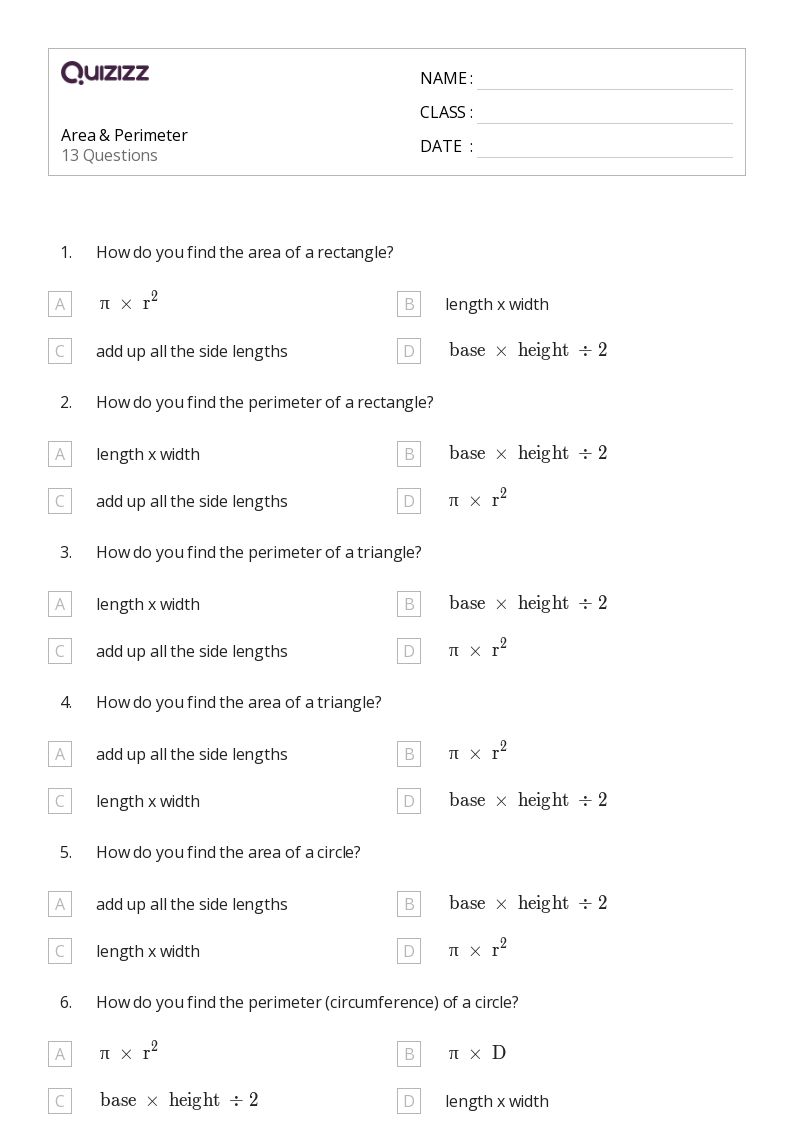
Frequently Asked Questions
-
What is perimeter?
Perimeter is the total length of the boundary of a two-dimensional shape. It is calculated by adding the lengths of all the sides of the shape.
-
What is area?
Area is the measure of the total space enclosed within the boundaries of a two-dimensional shape. It is calculated by multiplying the dimensions of the shape, such as length and width.
-
What are some common units used to measure perimeter and area?
Common units used to measure perimeter include meters (m), centimeters (cm), inches (in), feet (ft), and yards (yd). For area, square units such as square meters (m²), square centimeters (cm²), square inches (in²), square feet (ft²), and square yards (yd²) are commonly used.
-
How do you calculate the perimeter of a rectangle?
To calculate the perimeter of a rectangle, add the lengths of all four sides of the rectangle. Alternatively, you can use the formula: \( P = 2(l + w) \), where \( l \) is the length and \( w \) is the width of the rectangle.
-
How do you find the area of a circle?
To find the area of a circle, multiply the square of the radius (\( r \)) of the circle by the mathematical constant \( \pi \). The formula for the area of a circle is: \( A = \pi r^2 \).
-
What is Heron's formula?
Heron's formula is used to calculate the area of a triangle when the lengths of all three sides are known. It is given by: \( A = \sqrt{s(s - a)(s - b)(s - c)} \), where \( s \) is the semi-perimeter of the triangle and \( a \), \( b \), and \( c \) are the lengths of its three sides.
Conclusion
Understanding perimeter and area is essential for building a strong foundation in geometry. Throughout this comprehensive guide, we have explored the concepts of perimeter and area for various shapes, including rectangles, squares, triangles, and circles.
We have learned how to calculate the perimeter, which represents the total length of the boundary of a shape, and the area, which measures the total space enclosed within the boundaries of a shape. These concepts have real-life applications in fields such as construction, landscaping, agriculture, and urban planning.
By practicing examples and solving problems, we have gained proficiency in applying perimeter and area calculations to solve practical problems. Additionally, we have addressed frequently asked questions to clarify any doubts or misconceptions.
As we conclude, let's continue to explore the fascinating world of geometry, applying our knowledge of perimeter and area to solve new challenges and make meaningful contributions in various aspects of our lives.
Hãy xem video này để học cách tìm chu vi và diện tích của một hình hợp thể, sử dụng ví dụ về hình L. Thầy J sẽ hướng dẫn bạn từng bước một!
Tìm Chu vi và Diện tích của Hình Hợp Thể | Ví dụ Hình L | Hình học | Toán với thầy J
READ MORE:
Khám phá cách tính chu vi hình học qua video 'Toán Học Cơ Bản - Chu Vi'. Video này sẽ giúp bạn hiểu rõ và áp dụng khái niệm chu vi một cách dễ dàng và thú vị.
Toán Học Cơ Bản - Chu Vi






